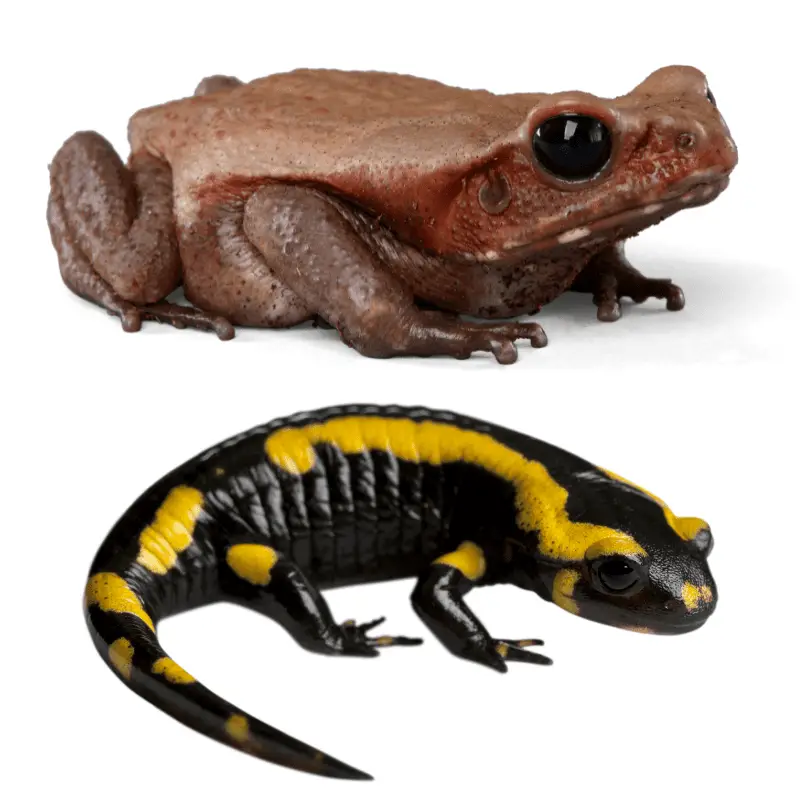The word amphibian can be broken up into two parts. “Amphi” meaning two, and “bian” meaning life. Combining both phrases means to have two lives. This is because the amphibians, in theory, live a double life. They start in life being as an aquatic gill-bearing living organism. Then, amphibians go on a metamorphosis journey, meaning they will undergo extensive change to become a terrestrial adult.
Common metamorphosis journey changes in amphibians
- Lungs tissue ready for respiratory function
- Growth of limbs
- Loss of tail
- Loss of gills
- Complete development of eyelids and mouth
These changes allow them to adapt to land and become land-dwelling adults. The process of metamorphosis takes around a week.
The shared common characteristics among amphibians
Skin
The skin of all amphibians is scaleless, smooth but could contain warts. It is also moist from their glands, resulting in a wet texture that is perfect for defence protection.
Eggs
The eggs of an amphibian, when laid, must be kept in a moist location. Therefore, the eggs are also encased in a gelatinous pocket for extra protection and moistness.
Metamorphosis
Amphibians lose their tails, grow limbs and lungs, and this is the metamorphosis process they undertake.
Cold-blooded (ectothermic)
Amphibians are cold-blooded creatures, so they need to rely on external heat sources to stay alive. To keep their body temperature regulated, they rely on the environment or the sun.
Limbs
As adults, the amphibians all have four limbs. These limbs grow throughout the metamorphosis process when growing up from larvae.
Diet
Most of the amphibians, when born, are not carnivores. However, they develop this during the metamorphosis process, and until then, they are classed as herbivores.
Breathing
Amphibians absorb oxygen through their skin to be able to breathe as well as their lungs.
The Skin Of An Amphibian
The skin is so unique and vital for amphibians to survive. So let’s find out some of the unique qualities they have.
- The moist skin protects amphibians from drying out.
- The moistness of the skin protects against predators, allowing them to slid out of a preditors grip.
- Some amphibians skin can light up when threatened; this process is called colouration.
- The skin contains a sensory organ called the cupula, and without even touching some amphibians, they can sense the wave currents and know of positioning and size of the threat.
- The skin can even withdraw water from the environment for added extra moisture, which helps them stay extra moist and not dry out. This is an absorbent method widespread in frogs.
- During mating, the skin can release a sticky substance that allows the male to hold onto the female.
- The skin can also help the amphibians to breathe by absorbing oxygen.
Amphibian Handling Advice (Skin)
Since the skin is exceptionally absorbent when handling amphibians, one must be careful not to have any hand cream or chemicals on their hands that could harm them.

